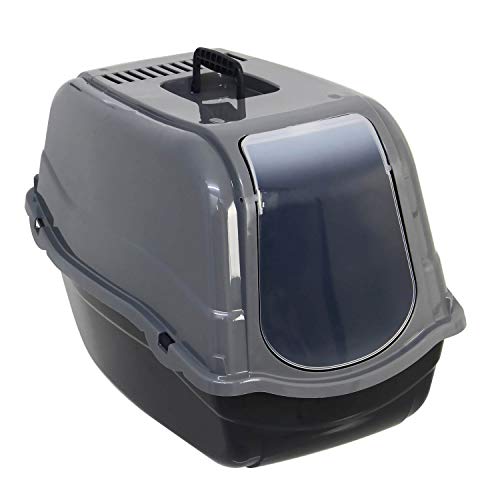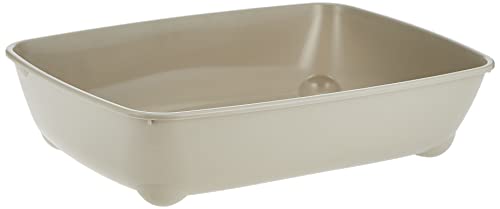Understanding Your Cat’s Needs: Choosing the Right Litter Box Size
Why Size Matters
When we think about our cats, it’s essential to remember that their comfort directly affects their health. If a litter box is too small, it can be cramped and uncomfortable, making your cat hesitant to use it. A good rule of thumb is to choose a box that’s at least one and a half times the length of your cat. For example, if your cat is around 40 cm long, then a litter box of at least 60 cm would be ideal. Having the right size not only encourages regular use but can also help avoid litter-spreading problems around your home.
How Many Cats Do You Have?
If we own multiple cats, we need to ensure we have enough litter boxes. The general guideline suggests having one box per cat plus an additional one. So, with two cats, three boxes are ideal. This prevents territorial disputes and ensures that each cat has access to a clean and comfortable space for their needs.
Types of Cat Litter Boxes: Finding the Best Fit for Your Home
Covered vs. Open Litter Boxes
Choosing between covered and open litter boxes largely depends on your cat’s preferences and your home environment. Open litter boxes allow for easy access and tend to be less intimidating for cats, especially shy ones. Covered boxes provide privacy for your cat and can help confine odours and litter, making them a great option for multi-pet households. Examine your cat’s habits: if they enjoy a more enclosed space, a covered box might be the way to go.
Self-Cleaning Options
For those of us leading busy lives, self-cleaning litter boxes offer a convenient solution. These innovative designs help reduce the hassle of scooping and can make litter maintenance a breeze. While they might come with a higher price tag, the time and effort saved could justify the investment, especially for those juggling multiple cats or a hectic schedule.
Features to Consider: Making Your Cat’s Box Comfortable and Convenient
Material Matters
The material of your litter box can impact both its longevity and usability. Plastic boxes are common due to their lightweight and easy-to-clean nature. However, consider options with higher sides if your cat tends to dig or kick litter outside the box. Some materials are also designed to reduce odor and increase durability, which can be helpful if your cat is a frequent user.
Additional Accessories
In addition to the box itself, think about accessories that can enhance your cat’s experience. Liner mats can catch stray litter and keep the area tidy, while scoopers designed with long handles can make it easier to clean without bending. Consider a separate space for your litter box that’s quiet, private, and away from busy household areas to help your cat feel secure while doing their business.
Maintenance Made Easy: How to Keep Your Cat Litter Box Fresh and Clean
Daily Cleaning Routines
Keeping your cat’s litter box fresh is essential for encouraging regular use. One effective strategy is to scoop the box at least once a day. This means simply removing clumps of soiled litter and ensuring the box stays clean. Establishing this routine not only promotes hygiene, but it can also be a good opportunity to monitor your cat’s health by observing their litter habits.
Deep Cleaning Techniques
In addition to daily scooping, deep cleaning the litter box at least once a week is vital. This involves completely emptying the litter box, scrubbing it with mild soap and water, and thoroughly drying it before adding fresh litter. This extra step ensures that any lingering odours are eliminated and creates a welcoming environment for your cat.
Budgeting for a Cat Litter Box: What to Expect in Terms of Cost and Value
Initial Product Costs
When purchasing a litter box, we might find a range of prices based on size, features, and materials. Generally, basic models start at a very affordable price, while advanced self-cleaning options can cost significantly more. It’s important to assess what features are most beneficial for us and our cats to ensure we’re investing wisely.
Ongoing Expenses
Apart from the initial purchase price, we must also consider ongoing costs, particularly for litter. The type of litter chosen can significantly affect our budget; clumping litters may cost more initially but can last longer and save us money in the long run by requiring less frequent changes. It’s beneficial to calculate both initial costs and recurring expenses to better understand our total commitment.


















